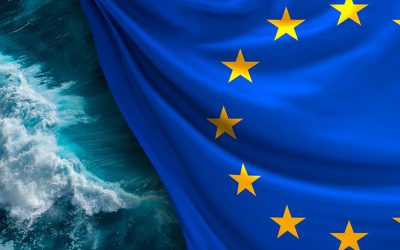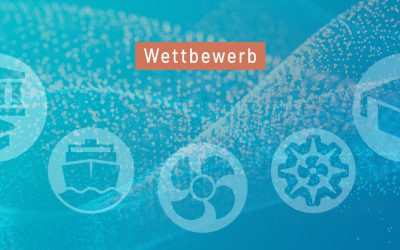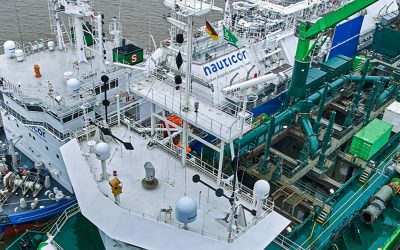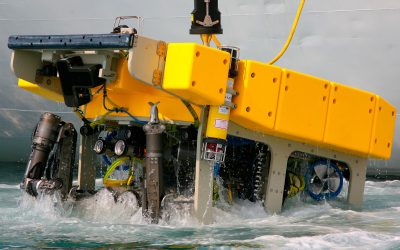
Hanna Maurer
Social Media for the Maritime Industry
Phone: +49 40 9999 698 - 82
E-Mail: Maurer[at]dmz-maritim.de
Companies across all sectors are confronted with demographic trends and the increasing shortage of young talent and skilled labour. The maritime industry, which is characterised by medium-sized companies, must reinvent itself in order to survive in global competition. Increasing climate and environmental requirements, automation and digitalisation as well as demographic change are challenging corporate organisation and culture. Suitable employees are needed to shape the transformation. But how do maritime employers deal with the cross-industry competition for trainees, students and prospective specialists and managers? How do they attract applicants?
Modern communication channels such as social media and the internet can be helpful in successfully attracting young talent. However, many maritime players are not yet using them in a targeted manner. Online media play an important role as a central information and exchange tool: Maritime employers need to catch up in terms of visible positioning in the online sector and addressing potential applicants in a targeted manner in order to remain competitive in a tight labour market.
With this in mind, the German Maritime Centre commissioned nexum AG in August 2023 to create eight selected candidate personas (profiles of ideal candidates) for the maritime sub-segments of port and terminal operations, shipping, shipbuilding, offshore and marine technology. Persona profiles provide helpful clues about the information behaviour, expectations and motives of the target groups. They enable the online approach to new employees to be designed more appropriately and successfully.
How the approach can be successful via digital contact points is to be developed using typical candidate journeys. In this concept, HR managers think from the perspective of applicants/candidates. It is used to attract employees and target group-specific design of the contact points from initial attention to job advertisements through to the application and onboarding process.
Study
In October and November 2023, workshops were held with HR managers and junior staff from maritime organisations in which professions were defined that are particularly relevant to the industry and affected by the shortage of young talent. Personal interviews with trainees and students helped to bring the research-based persona profiles to life and develop target group-specific candidate journeys and practical recommendations for action.
The overarching aim is to raise awareness among decision-makers, particularly in small, medium-sized and family-run maritime companies, of how to approach suitable candidates online and to provide them with concrete recommendations for successfully designing and optimising their online communication along the candidate journey – even on a small budget.
Prototypical persona profiles and suitable candidate journeys were developed for eight professions. These have neither the claim nor the mandate to offer company-specific solutions.
The results of the study are intended to provide communication and HR managers with a basis that they can adapt to their corporate culture and brand. The recommendations for action are illustrated in a practical way with best-practice examples ranging from job adverts and social media topics to the general design of website content.
Questions
- Which candidates are the maritime industry and the sub-segments of port and terminal operations, shipping, shipbuilding, marine technology and offshore looking for?
- Which positions have the greatest need for personnel when (re)filling and therefore require a digital candidate journey most urgently?
- What are the eight most important candidate personas across the industry?
- What are the most important digital touch points (website, social media, messenger, etc.) on the candidate journey?
- What content can maritime companies use to engage candidates online and at what stage?
- How can potential candidates who have had no previous contact with the maritime industry be reached (by digital means)
Results and recommendations for action
With the support of the maritime associations VDR, VSM, ZDS and ZVDS, committed representatives from organisations in port and terminal operations, shipping, shipbuilding, offshore and marine technology were recruited. These organisations were instrumental in identifying the following occupational fields, which are considered difficult to fill in the maritime industry in the future:
- Electronics technician (specialising in automation and systems technology)
- IT specialist
- Construction mechanic (metal/shipbuilding technology)
- Mechatronics technician
- Shipbuilding engineer
- Shipping clerk
- Ship mechanic/officer
- Industrial engineer in maritime sciences (target industry: offshore)
Getting to know and understand the target groups
From Ahmed to Torben to Valentina – the eight ideal personas of the trainees and graduates are aged around 20. They were born into a digitalised world of information and media and are used to finding information, communicating and buying products online with just a few clicks.
The communication channels and content interests of the personas vary depending on their personal characteristics and preferences. From this, indications can be derived for the candidate journey, the journey from initial awareness of companies and institutions to the application for specific training and study places and jobs. In order to approach young talent on this journey, maritime organisations need to consider the relevant touchpoints and topics in their process design and communication.
The following recommendations for action summarise what maritime employers can consider when addressing the eight personas and designing their communication measures:
Consider the most important touchpoints
The following touchpoints were identified as particularly relevant for corporate communication in order to attract young people to the professions mentioned in the maritime industry:
- Company website with transparent insights into corporate culture and job-specific tasks.
- Search engine marketing in the form of search engine-optimised texts and search engine ads in order to achieve a high reach of the content.
- Moving images as the most popular format for young target groups with emotionally appealing information about the maritime industry and its professional fields.
- Utilise social media channels such as Instagram, LinkedIn, TikTok and Co. as well as messenger services.
- Offer career guidance activities at and for schools.
- Be visible at locations with a maritime connection (e.g. water sports clubs, harbours, ferry terminals) – they are important as touchpoints, as private interest can lead to professional interest.
Addressing young talent with relevant content
In the phases of career orientation, training and starting a career in the maritime industry, young people are particularly attracted to information on the following topics:
- Environmental protection and sustainability – young talents pay attention to how employers position themselves and wish to be able to make a positive contribution.
- Internationality is an incentive to apply to be part of this globally system-relevant industry.
- Information on corporate values in terms of collegial cooperation.
- (Flexible) organisation of working hours, keyword work-life balance.
- Salary prospects and financial security.
- Further training and career opportunities.
Optimising the application process
In digital media, it is important to make information available quickly. The fewer clicks and the clearer the communication, the more likely it is that applicants will stick around. Young people want this:
- Information on contact persons with contact options.
- Transparent presentation of the application process in terms of procedure and duration.
- Streamlined processes when applying and in the phase of introductions and getting to know each other..
- Realistic job descriptions.
- The option to apply online.
- Transparent presentation of career paths.
- Opportunities for practical insights and experience (e.g. via internships).
Interested parties find further information on how to address the individual job-related personas in the detailed study.
Outlook
We would like to support HR and communication managers of maritime organisations in drawing the attention and interest of young people in particular to the diverse career prospects and topics in the maritime industry.
With studies and practical information and exchange formats, we provide maritime stakeholders with knowledge and tools for successfully organising their digital communication activities.
It is important to put the expertise we have built up into practice – existing potential needs to be utilised: In order to make the diversity and systemic relevance of the maritime industry visible in the minds of talented individuals and to inspire them to join the “maritime family”, joint measures and the efforts of each individual organisation are needed – be it from business, research or politics.
As the German Maritime Centre, we see it as our task to bring maritime stakeholders together and to initiate and coordinate the implementation of joint strategic communication activities.



























